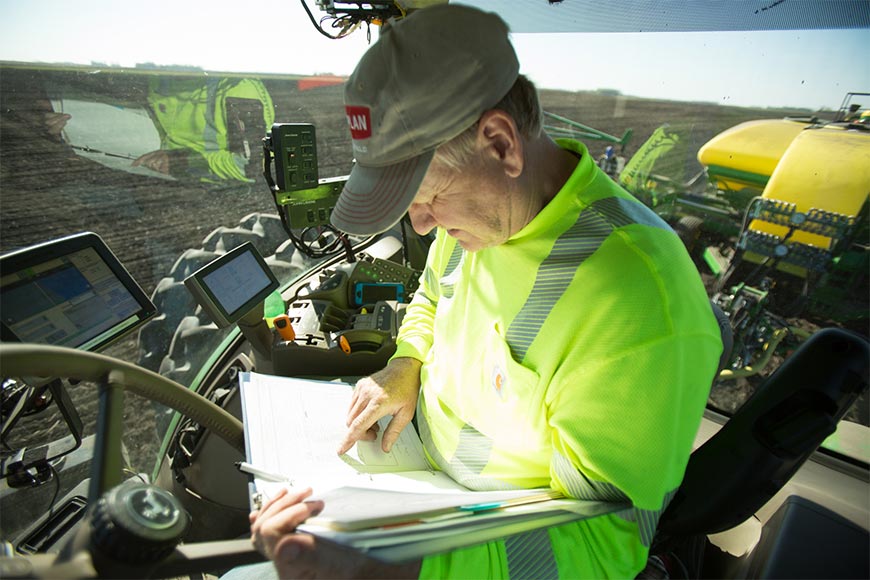Tips to Ease the Pain of Data Entry

Keeping accurate, clean data records is key when you’re trying to make critical planning, in-season and harvest decisions. And as you continue to add new equipment and technology to your program, data sets can get messy, resulting in inaccuracies. Here are three ways to enhance data accuracy throughout the season.
1. Before planting, make sure you’re naming farms and fields consistently across systems.
Setting field and farm boundaries at the beginning of the season and maintaining a consistent naming structure sounds easy, but small variations can often make a world of difference. You might have “Home 40” in the tractor and “home” in the combine, causing the systems to think that the same field is actually two separate fields.
Start fresh and keep one list of names and labels for your fields and farms. Then apply that structure within all of your systems, like your GIS, modeling program, combine, etc. Then share this list with advisors and your retailer to ensure a standardized approach across the board.
2. When you plant, maintain accurate as-applied planting files.
Once you get your data structured at the beginning of the season, ensure that you maintain the structure as you record application data – from planting to in-season applications and beyond. When your as-applied files are clean and complete, you can rely on them when making future decisions, knowing you have the right brand, product and rate recorded. As new technologies and chemistries come out and hit fields, being diligent about crop rotations will be even more critical for proper stewardship of those technologies.
3. At harvest, calibrate and recalibrate combines often.
It’s common practice to recalibrate when you switch from harvesting corn to soybeans. However, it’s important to recalibrate between fields of the same crop as well. It can be easy to keep rolling when you have all corn acres, because it’s historically been a time-consuming task to recalibrate. However, newer technologies have scales right in the grain hoppers that are reducing how much time this takes. Most importantly, if you want accurate data readings, you need accurate equipment. To be innovative next year, you have to have harvest data to identify areas where improvements can be made.
A little legwork now can make your data management smooth sailing this year. To learn more about ways to streamline data storage and management, contact your local WinField® United retailer.
1. Before planting, make sure you’re naming farms and fields consistently across systems.
Setting field and farm boundaries at the beginning of the season and maintaining a consistent naming structure sounds easy, but small variations can often make a world of difference. You might have “Home 40” in the tractor and “home” in the combine, causing the systems to think that the same field is actually two separate fields.
Start fresh and keep one list of names and labels for your fields and farms. Then apply that structure within all of your systems, like your GIS, modeling program, combine, etc. Then share this list with advisors and your retailer to ensure a standardized approach across the board.
2. When you plant, maintain accurate as-applied planting files.
Once you get your data structured at the beginning of the season, ensure that you maintain the structure as you record application data – from planting to in-season applications and beyond. When your as-applied files are clean and complete, you can rely on them when making future decisions, knowing you have the right brand, product and rate recorded. As new technologies and chemistries come out and hit fields, being diligent about crop rotations will be even more critical for proper stewardship of those technologies.
3. At harvest, calibrate and recalibrate combines often.
It’s common practice to recalibrate when you switch from harvesting corn to soybeans. However, it’s important to recalibrate between fields of the same crop as well. It can be easy to keep rolling when you have all corn acres, because it’s historically been a time-consuming task to recalibrate. However, newer technologies have scales right in the grain hoppers that are reducing how much time this takes. Most importantly, if you want accurate data readings, you need accurate equipment. To be innovative next year, you have to have harvest data to identify areas where improvements can be made.
A little legwork now can make your data management smooth sailing this year. To learn more about ways to streamline data storage and management, contact your local WinField® United retailer.


